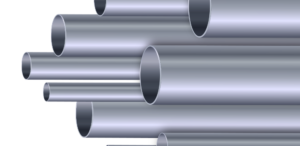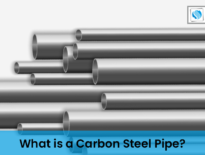Mild Steel vs Carbon Steel: What is the Difference?
The question of whether carbon steel is better than mild steel can be clarified by understanding that mild steel is actually a type of carbon steel. Carbon steel is broadly defined as any steel that contains carbon as an alloying element, with mild steel specifically referring to steel with a low carbon content ranging from 0.05% to 0.25%. The presence of carbon is fundamental to all steel compositions. When carbon is the primary alloying element in steel, it falls under the category of carbon steel. In essence, mild steel is a subset of carbon steel, also known as low-carbon steel. However, there are other variations of carbon steel with different carbon content levels. Mild steel and carbon steel difference depends on the intended application, with each variant offering specific advantages based on its carbon content and corresponding properties.
Carbon Steel vs Mild Steel
Low carbon steel, typically containing 0.04–0.3% carbon, represents the most prevalent grade within the carbon steel category. Mild steel, a subset of low carbon steel, is characterized by its low carbon content ranging from 0.05 to 0.25%. At the upper limit of the low carbon content spectrum, especially when coupled with manganese additions of up to 1.5%, mild steel exhibits mechanical properties suitable for more demanding uses like stampings, forgings, seamless tubes, and boiler plates. This versatility in mechanical properties makes mild steel a widely utilized material across multiple industries. We have set multiple points to understand carbon steel vs mild steel withproperties, cost and applications
Primary Difference
| Comparison | Mild Steel | Carbon Steel |
| Carbon Content | Low | Medium to Ultra-High |
| Mechanical Strength | Moderate | High |
| Ductility | High | Moderate – Low |
| Corrosion resistance | Poor | Poor |
| Weldability | Good | Generally not suitable |
| Cost | Inexpensive | Slightly higher per weight |
Carbon Steel and Mild Steel Difference
Understanding the differences between carbon steel and mild steel is essential, as each type offers unique advantages depending on the application. Mild steel is favored for low-stress uses due to its ease of fabrication and affordability, making it a practical choice for projects where strength isn’t the primary concern.
On the other hand, carbon steel, ranging from medium to ultra-high carbon content, shines in high-stress applications thanks to its significantly higher strength, which can be up to 20% more than mild steel. This makes carbon steel ideal for tasks requiring superior strength and hardness.
However, it’s important to note that the increased carbon content in carbon steel also translates to higher costs compared to mild steel, which can be a factor to consider in budget-conscious projects. Additionally, welding carbon steel can be more challenging than welding mild steel, making it less suitable for welding-intensive applications.
Therefore, the choice between carbon steel and mild steel ultimately depends on the specific requirements of the project, balancing factors such as strength, cost, and welding considerations. Carbon steel and mild steel difference explained to take an appropriate decision to use steels in the requirements.
Carbon Steel vs Mild Steel Price
Carbon steels cost more than mild steels because they’re stronger, thanks to extra stuff mixed in. On average, they can range from $800 to $1,000 per ton, depending on where you get them and what type you need.
But here’s why people are willing to pay more: Carbon steels are super strong without losing their flexibility. That’s why they’re great for big projects like building skyscrapers or bridges, where you need materials that can handle a lot of weight. Even though they cost more than other options like aluminum or stainless steel, many industries still prefer carbon steel because it gives you the best bang for your buck when you need that extra strength.
Carbon Steel vs Mild Steel Properties
Mild steel is easier to work with and cheaper, so it’s good for things that don’t need to be super strong, like basic structures.
Carbon steel is stronger because it has more carbon, which makes it great for tough jobs where you need strength, like in heavy machinery or buildings that need to withstand a lot of pressure. Hence it is also known as black steel. Detail analysis of mild steel carbon steel difference.
But here’s the catch: carbon steel costs more because of that extra strength it offers. Plus, it’s trickier to weld compared to mild steel, so it might not be the best choice for projects that involve a lot of welding.
Conclusion: Difference Between Carbon Steel and Mild Steel
Carbon steel is tougher and harder than mild steel because it has more carbon and other stuff mixed in. It’s great for making strong things like cutting tools, car parts, and buildings.
Mild steel is mostly just iron with a little bit of carbon and other things. It’s softer and easier to bend or shape. That’s why it’s used for things like pipes or tubes that need to be twisted or bent. Contact Solitair Overseas for more information about the steel and its applications.




